The 14 Best Female Characters in Fantasy Fiction
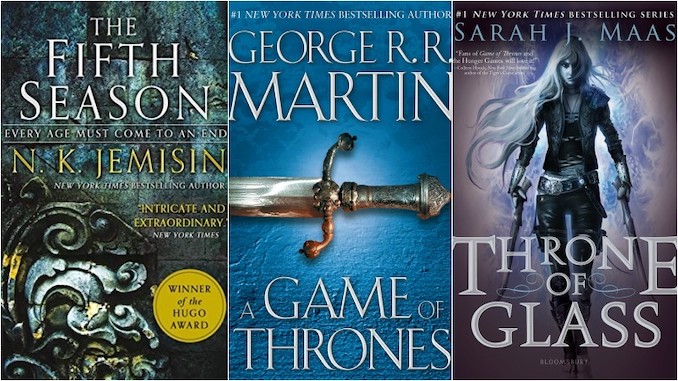
If one were to divide eras of fantasy novels into ages, this would most likely be considered the Fourth Age, the Age of Diversity. The first three ages (I’d call them Victorian, Short Stories & Children Focused, and Middle Earth) were almost exclusively the domain of white, middle-class male authors, and their protagonists reflected that. However, with the arrival of the 21st century, there has been a veritable explosion of women-authored stories, memorable heroines, and overtly female-focused fantasy adventures.
But every novel (or series) on this list is from the last ten years when a significant wave of diverse authors and stories really hit the market in a major way. Long before “Strong Female Character” became an overused (and sometimes abused) trope among modern fantasy enthusiasts, heroines were riding to faraway lands on dangerous weather patterns, watching their families get beheaded in front of them, and discovering their own inner magic.
Though some would include characters who started on TV series and then crossed into novels, I’ve kept this list book-centric, meaning these ladies first appear on the page before they were adapted to the big or small screen. (Sorry, General Leia.)
![]()
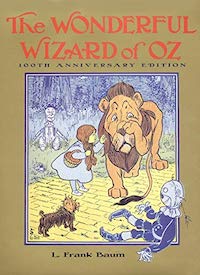 Dorothy Gale of Kansas, the Oz series by L. Frank Baum (1900)
Dorothy Gale of Kansas, the Oz series by L. Frank Baum (1900)
One of the earliest foremothers of the fantasy genre, Dorothy Gale hails from the turn of the century and a children-focused story that initially hides the incredible world-building that ultimately develops over the course of L. Frank Baum’s 14-novel series. But it’s the girl who introduces the world to us who stands out, especially once she moves to Oz on a full-time basis in the series’ fourth installment.
Dorothy Gale is a robust and sensible girl who is clear-eyed about her situation while empathizing with both the family she’s left and the one she finds on the Yellow Brick Road. Her practicality and quick thinking make her a timeless heroine that kids are still discovering 122 years later.
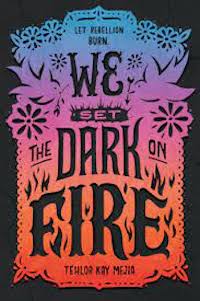 Daniela Vargas, the We Set The Dark On Fire duology by Tehlor Kay Mejia (2019)
Daniela Vargas, the We Set The Dark On Fire duology by Tehlor Kay Mejia (2019)
Tehlor Kay Mejia’s debut novel, We Set The Dark On Fire, was the first half of a duology that concluded with We Unleash The Merciless Storm. The dystopian story is set in a bigamist society where men have two wives and women are trained to run a household or raise children. Its heroine, Daniela Vargas, has just graduated top of her class, but under a false identity, her papers forged to get her into a school inside the walls of Medio, where she will have a better life.
But marrying one of Medio’s most powerful men only means she’s a target for groups looking for spies on the inside. And when Daniela falls in love with the last person she should—her husband’s other wife—she starts having to make hard choices. Daniela’s journey over the two novels is a powerful story of resistance and the sacrifices rebellions often demand.
 Nynaeve al’Meara, The Wheel of Time series by Robert Jordan (1990)
Nynaeve al’Meara, The Wheel of Time series by Robert Jordan (1990)
The TV version of Robert Jordan’s groundbreaking (and backbreaking) 14-tome series reorients The Wheel of Time to be about the story’s powerful women. However, when the series first hit shelves, its opening book, The Eye of the World, felt like any other male-driven hero’s journey until the first Nynaeve chapter. The introduction of not just a central female character’s point of view in a patriarchal society, but a woman who was so obviously struggling with internalized misogyny that held her back from her magical abilities, was groundbreaking for the era.
Nynaeve can also be read as something of an anti-hero when she first arrives on the page: bitter, angry, snappish, and confident her opinions are the right ones. Watching her meet her match and fall in love with both a man and herself is a journey worth going on.
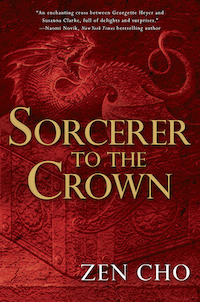 Prunella, the Sorcerer Royal series by Zen Cho (2015)
Prunella, the Sorcerer Royal series by Zen Cho (2015)
Though technically Sorcerer To The Crown focuses first on the formerly enslaved Zacharias, the most memorable character from UK-based Malaysian author Zen Cho’s Sorcerer Royal series is the woman he takes on as a student, Prunella. Despite women not being allowed to practice magic, Prunella isn’t about to let a little thing like laws stop her, and as Regency-era England is losing magic fast, the country needs her.
When dark forces cross over from fairyland, it’s not long before the tables are turned; Prunella is the master, and Zacharias can barely keep up. Her strength and willingness to stand up to anyone and anything is the true power behind Prunella’s spells.
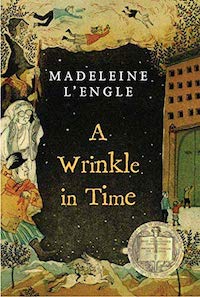 Meg Murray, the Time Quintet by Madeleine L’Engle (1962)
Meg Murray, the Time Quintet by Madeleine L’Engle (1962)
One of the most essential characters in female fantasy history, Meg Murray, with her frizzy hair and awkward glasses, made time travel and science cool by saving the world and rescuing the men in her family. As Madeleine L’Engle’s series goes on, Meg grows up, marries her sidekick and best friend Cal, and has a daughter of her own, Polyhymnia O’Keefe, who becomes the heroine of her own set of stories.
A Wrinkle in Time is an early deeply feminist work that reminds girls it’s ok to get angry and even better to use that anger to stand up to those oppressing you. The Time Quintet are must-reads for any girl who’s felt awkward and nerdy while trying to save the world.
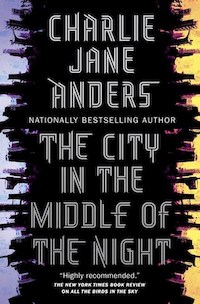 Sophie, The City In The Middle Of The Night by Charlie Jane Anders (2019)
Sophie, The City In The Middle Of The Night by Charlie Jane Anders (2019)
One of the few stand-alone stories on this list, Charles Jane Anders’ The City In The Middle Of The Night introduces Sophie, a student living in a world divided, where half the globe is permanently frozen in darkness and the other is blazing endless sunshine. Sophie is sent into the dark when the revolution to make “Twilight City” Xiosphant free falls apart.
But thanks to her bravery, and some help from beings trapped beneath the ice, she once again takes up the mantle of revolution and leads her broken people into the light. In a time when people know they have to stand up to change the world, seeing Sophie risk it all is an inspiring tale.
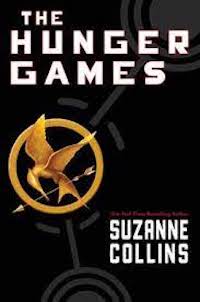 Katniss Everdeen, The Hunger Games trilogy by Suzanne Collins (2008)
Katniss Everdeen, The Hunger Games trilogy by Suzanne Collins (2008)
At this point, more people likely know the Jennifer Lawrence version of Katniss and her love triangle better than they do Katniss on the page. However, the book’s original character, who narrates the story from a first-person perspective, is far more concerned with the simple act of surviving in a brutal world that sees her as a performing animal for their entertainment than a human being.
The Hunger Games novels are also far more terrifying (and much more satirical about reality show culture, both entertainment and political) than the movies could ever be. Reading Katniss’ journey through terrors of war and the struggles of PTSD, even as she must keep entertaining the masses, is a far more harrowing tale but a much more satisfying one.
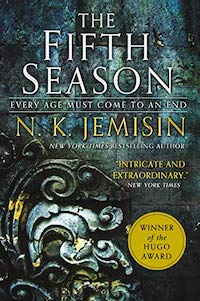 Essun, The Broken Earth trilogy by N.K. Jemisin (2018)
Essun, The Broken Earth trilogy by N.K. Jemisin (2018)
It’s a rare novel that’s told in the second person. However, N.K. Jemisin’s The Broken Earth trilogy’s use of this perspective is brutally effective in terms of putting the reader in the shoes of Essun, a broken, middle-aged mother. She has spent the last decade passing in a society biased against her kind. But when her old love takes it upon himself to rip apart the world that treats him as inferior for being both LGBTQ+ and magical, she must set out on a journey to survive and find her daughter, lost in the chaos.
The wonder of The Broken Earth trilogy is that it features precisely the same tropes that have been done over and over by white, straight authors, but told through the perspective of a woman of color. Essun’s story of survival is brilliantly familiar, while it feels like a brand new story told for the first time.
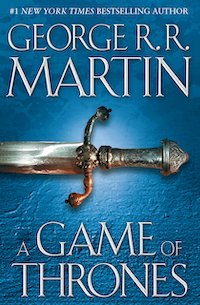 Sansa Stark, A Song of Ice and Fire by George R.R. Martin (1996)
Sansa Stark, A Song of Ice and Fire by George R.R. Martin (1996)
The HBO Game of Thrones series overtook the George R.R. Martin novels it was adapting, and in doing so, fumbled the ending of the epic saga pretty hard. But even in the five books that do exist on the shelves, Sansa Stark is something completely different. Because when male writers tell stories from a woman’s perspective and in a woman’s voice, most tend to essentially make them male characters in women’s skin. (Arya and Brienne are perfect examples.)
But not Sansa. Though the books are still far away from crowning her Queen in the North as the series did, her character is remarkable for being wholly feminine, with a center that is “family first.” At first, it makes her an unwitting lackey to the enemy, but as she matures, it becomes her greatest strength.
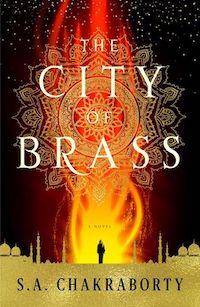 Nahri, The Daevabad Trilogy by S.A. Chakraborty (2017)
Nahri, The Daevabad Trilogy by S.A. Chakraborty (2017)
Shannon Chakraborty’s debut novel, The City of Brass, was an international best-seller right out of the gate, and her heroine, Nahri, a con artist living on the streets of 18th century Cairo, dazzled readers. When Nahri accidentally summons a djinn called Darayavahoush e-Afshin, she’s quickly whisked away to a world she didn’t believe in, Daevabad, the legendary city of brass with enchanted walls that hold the six djinn tribes.
The best part about Nahri is that she doesn’t magically clean up or become a wise ruler or any of those tropes. Instead, she learns quickly that the grifter skills she used to survive on the streets are a weapon in a world of cutthroat magical politics. While she befriends an idealistic prince, his belief in humanity’s goodness is his undoing, while her sleight of hand keeps her on top.
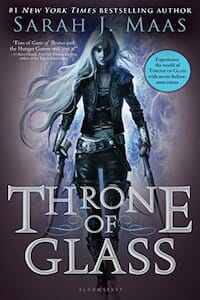 Celaena Sardothien, the Throne of Glass series by Sarah J. Maas (2012)
Celaena Sardothien, the Throne of Glass series by Sarah J. Maas (2012)
Sarah J. Maas’ Celaena is not for everyone. An arrogant anti-heroine inspired by, of all the unlikely things, by an image of Cinderella’s fleeing the ball at midnight, this part fae assassin finds herself in one of the classic enemies to lovers romances and never changes a thing about herself to get the guy to fall in love with her.
The first book has a hell of a hook, with an elite assassin’s competition where Celaena’s self-assured opinions are as tested as her ability to slaughter on command. But the epic scope of the story that unfolds over the subsequent novels, as she learns about her past and confronts her future, really tests her mettle.
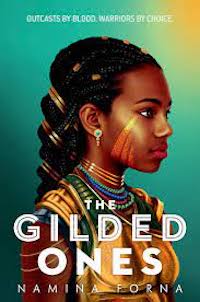 Deka, the Deathless series by Namina Forna (2020)
Deka, the Deathless series by Namina Forna (2020)
The most recent release on this list, the second novel of Namina Forna’s Deathless series, The Merciless Ones, only just came out this spring, and the third installment does not yet have a title or release date. But the series’ heroine Deka has already proven herself worthy of a spot here—and worth the wait for the final installment of this West African-inspired epic fantasy.
Deka, who only longs to be normal, discovers on her 16th birthday that she does not bleed red but gold. While her tribe would drive her out for being “impure,” it’s a mark of the alaki—near-immortals with rare gifts, and Deka is swept up and taken to the Emperor to become part of an army of girls like herself.
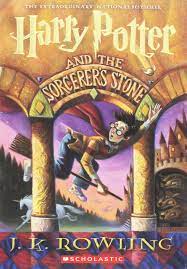 Hermione Granger, the Harry Potter series by J.K. Rowling (1997)
Hermione Granger, the Harry Potter series by J.K. Rowling (1997)
Listen, it is not Hermione’s fault the Harry Potter novels focused on the kid sitting next to her in class with the scar on his head or that the series’ author’s behavior is growing increasingly despicable. Any girl over eight years old handed the Harry Potter novels immediately saw themselves in Hermione Granger, the nerdy Muggle kid with utterly dull parents who becomes the brightest witch of her age.
Whether embodied by Emma Watson, Noma Dumezweni, or your own interpretation, Hermione’s combination of intelligence, relatable insecurities and crush on someone who wasn’t up to snuff was formative to a generation of female readers. No list of best female fantasy characters is complete without her.
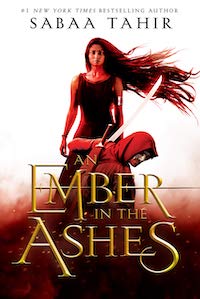 Laia, An Ember in the Ashes series by Sabaa Tahir (2015)
Laia, An Ember in the Ashes series by Sabaa Tahir (2015)
A series inspired by Ancient Rome, An Ember in the Ashes is a dystopian tale set in a world that has been subjugated by the brutal Martial Empire for hundreds of years. Its heroine, Laia, is part of the oppressed Scholar class, whose carefully quiet life is thrown into chaos when a squadron of Martial Raiders show up to arrest her brother for treason and kill her grandparents in the process.
Desperate to find and free Darin, Laia agrees to work for the underground rebellion in exchange for their help in getting him out of prison. She is sent as a slave to the Empire’s central military academy in order to spy for the Resistance, where she meets a cadet named Elias, a student and soldier (also called a Mask) who is also struggling to rebel against the system. Though the story has plenty of angst and heartbreak, Laia always comes back stronger and ready to fight over the four-book series.
Ani Bundel is a TV and movie writer at Elite Daily covering all things peak TV and an Associate Editor at PBS/WETA’s Telly Visions, where she co-hosts a weekly podcast by anglophiles for anglophiles. A self-taught journalist from the school of hard knocks, Ani came up blogging in the fast-turn-around era. Ani’s other regular bylines can be found on NBC News THINK.







































